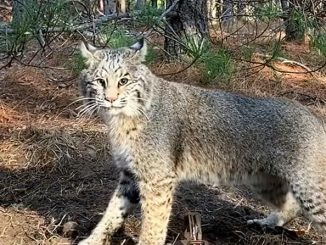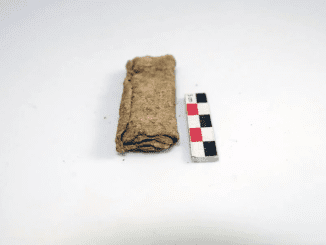After rescuing a group of raccoons from the gutter, our house changed in unexpected ways. Initially, we didn’t plan on keeping them, but their adorable faces won us over. We set up a cozy corner in the garage for their temporary stay. The kids were thrilled, and our daily routine shifted as we learned to care for our new furry friends. The raccoons quickly became a topic of conversation and fascination for everyone who visited, bringing a unique charm to our home.
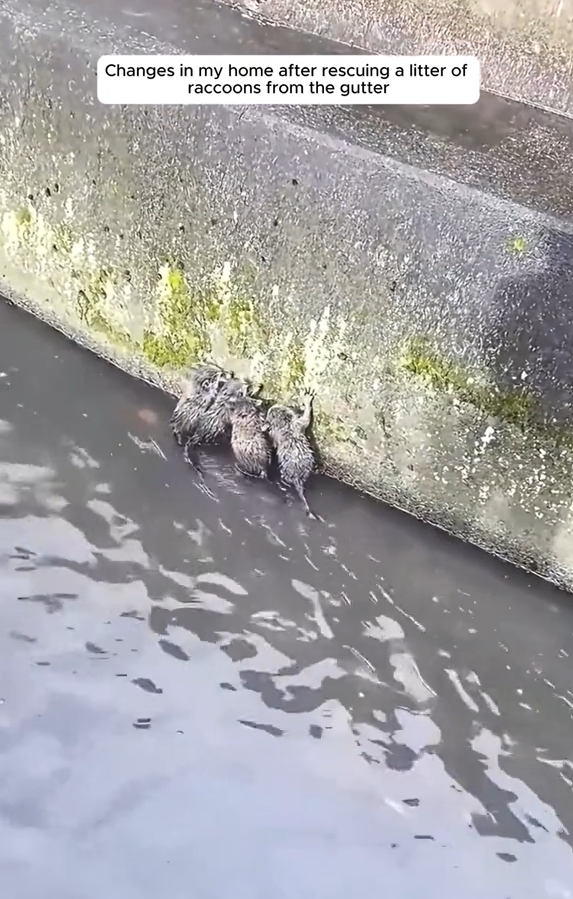
Feeding the raccoons became a new, exciting ritual in our household. We researched the best diet for them and enjoyed watching their playful antics as they ate. Fresh fruits, vegetables, and a variety of nuts became a staple in our kitchen. The kids took turns feeding them, which taught them responsibility and care for animals. The raccoons, initially shy, grew more comfortable with us, eagerly awaiting their meals. This routine added a sense of purpose and joy to our days, bonding us as a family through our shared commitment.
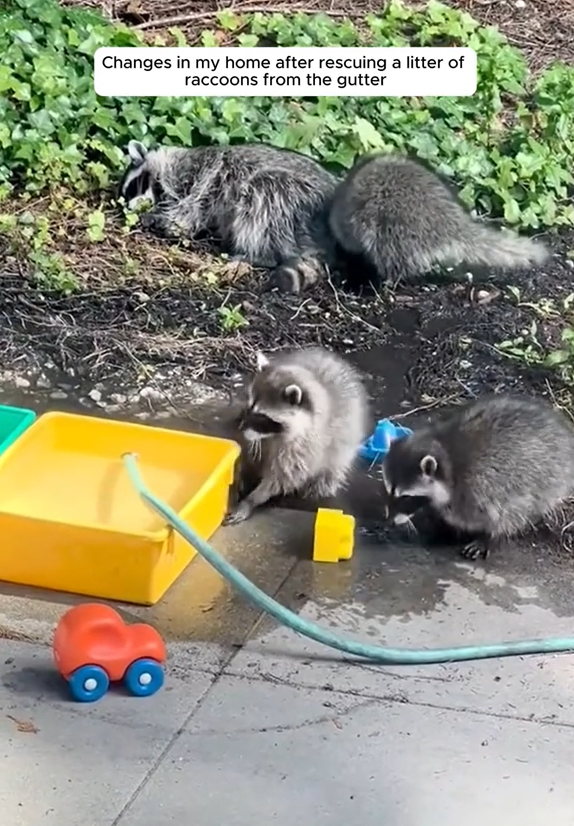

The raccoons’ playful nature brought laughter and joy into our home. They loved to explore, and their curiosity knew no bounds. We raccoon-proofed the house as best we could, but their cleverness often outsmarted us. Watching them play with toys and chase each other around the yard was a delight. Their antics became a source of entertainment, providing countless hours of amusement. The kids especially loved creating obstacle courses for them, which the raccoons navigated with surprising agility and intelligence.
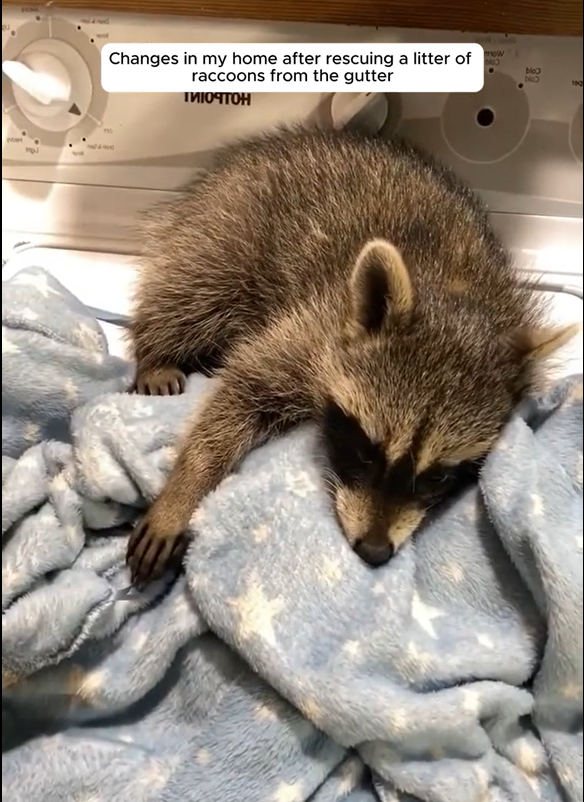
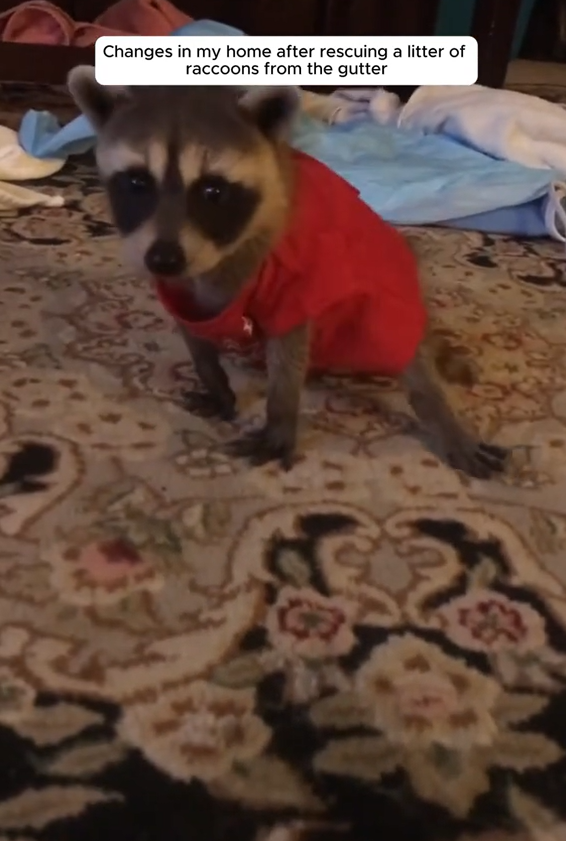
Having raccoons in the house turned into an educational experience for our family. We learned about their habits, behavior, and the importance of wildlife conservation. The kids wrote school reports and shared stories about their new friends, sparking interest among their classmates. We all became more aware of how human activities impact wildlife and the importance of providing safe habitats for animals. This experience fostered a greater appreciation for nature and wildlife in our children, teaching them valuable lessons about empathy and stewardship.
Our home became a popular spot for neighbors and friends curious about the raccoons. People came by to see them, bringing treats and toys. We enjoyed sharing stories of their rescue and watching others marvel at
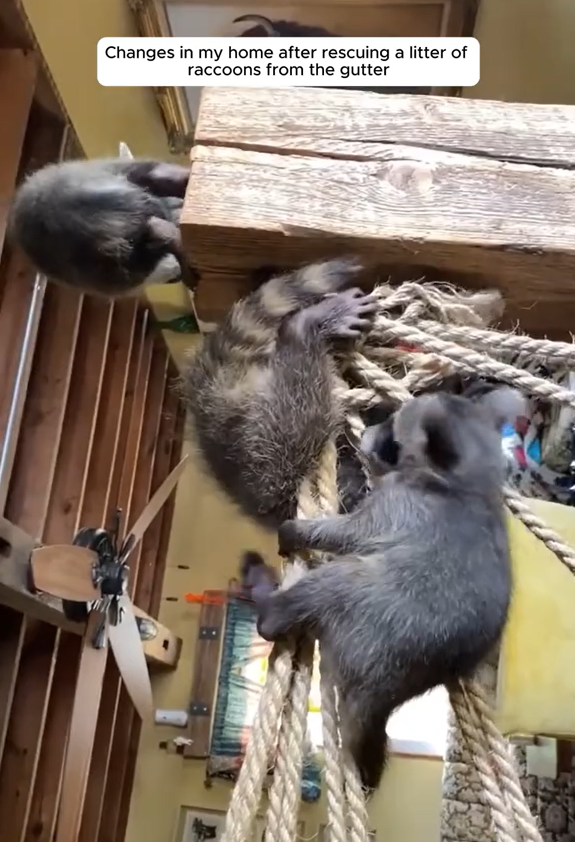
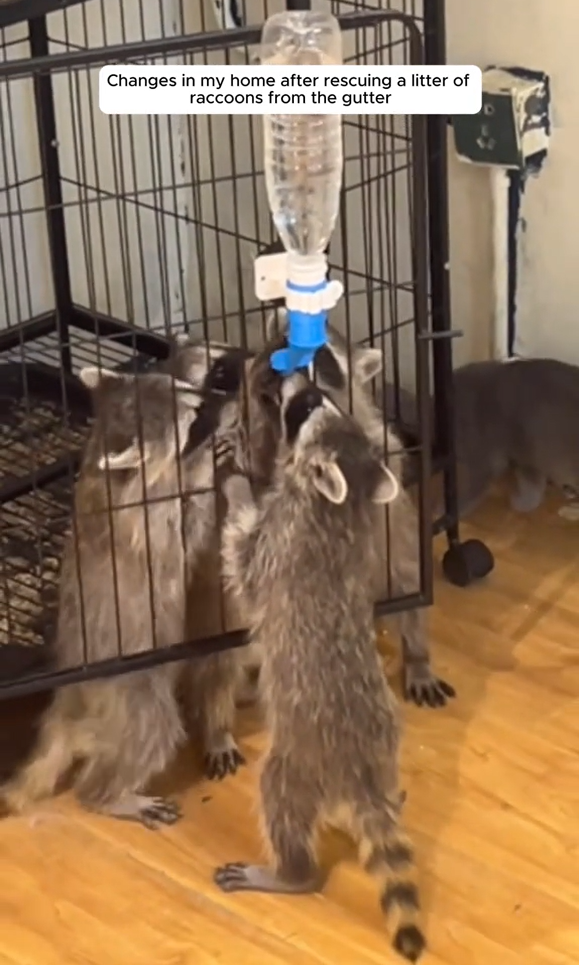
Our daily routines changed significantly with the raccoons in our home. Morning and evening check-ins to feed and play with them became a part of our schedule. We found ourselves prioritizing their needs, ensuring they were comfortable and happy. This shift in routine brought a sense of purpose and responsibility. It also gave us more opportunities to spend time together as a family, creating memories and strengthening our bonds. The raccoons’ needs dictated a new rhythm in our household, one that brought joy and fulfillment.

The emotional impact of rescuing the raccoons was profound. We grew attached to them, and they became a part of our family. Their trust and affection were heartwarming, and their playful energy brightened our days. We felt a deep sense of fulfillment knowing we had given them a second chance. This experience taught us compassion and the importance of helping those in need, whether human or animal. The raccoons’ presence brought love and joy into our home, leaving a lasting impact on our hearts.

Eventually, it was time to release the raccoons back into the wild. We found a suitable habitat where they could thrive. The farewell was bittersweet; we were sad to see them go but happy knowing they would live freely. We watched them scamper off, grateful for the time we shared. The house felt a little emptier without them, but the memories and lessons they left behind stayed with us. Rescuing the raccoons changed our lives, reminding us of the power of kindness and the joy of unexpected friendships.
